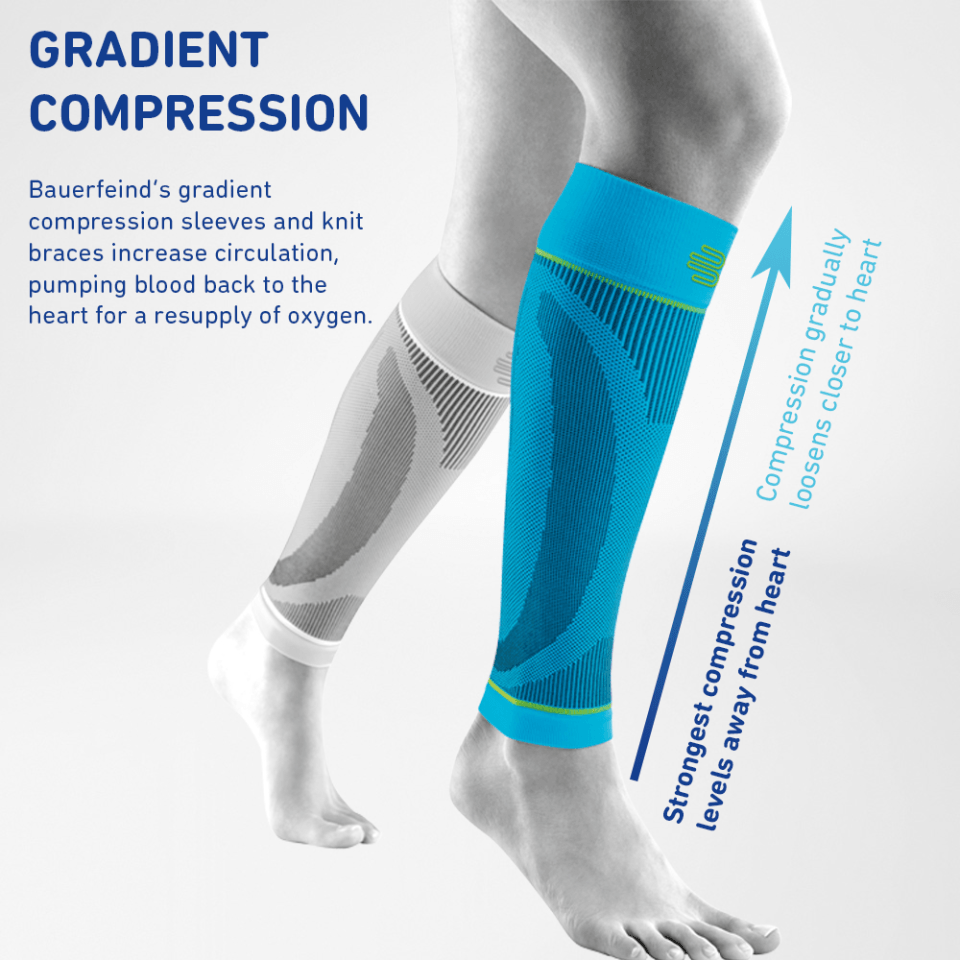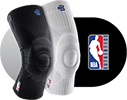THE MEDICAL COMMUNITY HAS KNOWN FOR A LONG TIME THAT MEDICAL-GRADE COMPRESSION CAN REDUCE SWELLING, BUT THE HYPE AROUND OTHER POTENTIAL BENEFITS OF COMPRESSION SUPPORTS AND APPAREL HAS EVERYONE IN THE SPORTS WORLD BUZZING!
We spoke with Erin Grigsby, Bauerfeind physical therapist and medical education specialist, to get the facts about compression:
Medical-grade compression has been shown to improve circulation; hence the reduced swelling. We now know that this improved circulation increases the supply of oxygen throughout the body.
The result: This can lead to better endurance and less fatigue, which means you can train harder, longer!
Medical-grade compression also reduces muscle vibrations.
The result: This can reduce post-exercise soreness and quicken recovery times, so you can get back in the game at the top of your game.

The two basic components of true “medical-grade compression” are gradient compression and proper compression levels:
Gradient compression means the compression is strongest farthest away from the center of the body/heart and slowly loosens as it goes closer to the center of the body. If wearing a lower extremity sleeve like the Bauerfeind Lower Leg Compression Sleeve, the compression would be strongest towards the foot and slowly loosen as it goes up toward the thigh.
The result: medical-grade compression pumps blood away from the extremities and back to the heart for re-supply of oxygen.
Medical-grade compression levels are in the “sweet spot”: any lower and the compression would not be effective, any higher and the compression could be dangerously tight, cutting off blood flow and producing pain and possibly ischemic (reduced blood flow) damage.
The result: True “medical-grade compression” falls into the RAL standard range for compression, providing therapeutic levels which are safe and effective in stimulating circulation.



